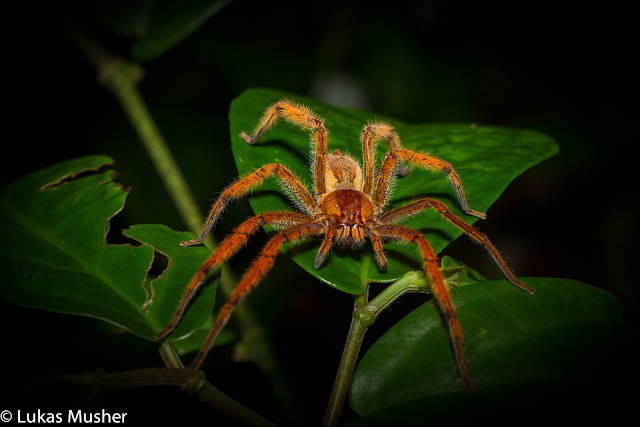I just returned to Heredia after 10 rather windy days in Talamancan cloud forest 2500m above sea level. I think my favorite bird that we captured since I've spoken with you last is this incredible (/incredibly bad-ass) Streak-breasted Treehunter, a member of the family, Furnariidae, which includes ovenbirds (subfamily: furnariinae), miners and leaf-tossers (Sclerurinae), and woodcreepers (Dendrocolaptinae).
 |
| A closer (above) and even closer (below) look at this remarkable species. Too much? Sorry but it's awesome. |
I know that I keep saying what families I like and don't like, but I have to say that this morphologically and behaviorally diverse family, Furnariidae, is another one of my favorites. With 293 currently recognized species, it is an amazing group to study from the perspectives of evolution, biodiversity, and ecology. It is not uncommon to be watching 5 or more (in some cases many more) species of these often audacious birds in one mixed feeding flock moving through tropical rainforest. Granted in the Costa Rican highlands 5 species at once
is somewhat uncommon, but I did commonly see a few including Spot-crowned Woodcreeper, Ruddy Treerunner, Red-faced Spinetail, and Buffy Tuftedcheek. Such diversity of species can be noted simply by pointing out that the family is well-represented in just about every habitat type in the Neotropics from the hot, dry Atacama desert to
Polylepis forest in the high Andes, to cloud forest and Amazon rainforest.
Interestingly enough, 97% of the species-level and 100% of the genus-level diversity (currently recognized of course) is found in South America. That means that the vast majority of this giant 33 million-year-old radiation of Sub-oscine Passeriformes birds took place in South America, only spreading north into Central America after the closing of the isthmus of panama 2.5-4 mya (or one newer study indicates as early as 15mya!)
Maybe it's my lack of very much old-world exposure, but the new world is, well,
mejor, as they say down here in the CR. Point not arguable. Don't try. Or do, I won't care.
¡Tuanis mae!
References:
Brumfield, Robb T.
Inferring the Origins of Lowland Neotropical Birds (2012)
The Auk, 129(3): 367-376
Derryberry, Elizabeth P.
et al. Lineage Diversification and Morphological Evolution in a Large-scale Continental Radiation: The Neotropical Ovenbirds and Woodcreepers (Aves: Furnariidae) (2011)
Evolution 65:2973-2986

















































.JPG)